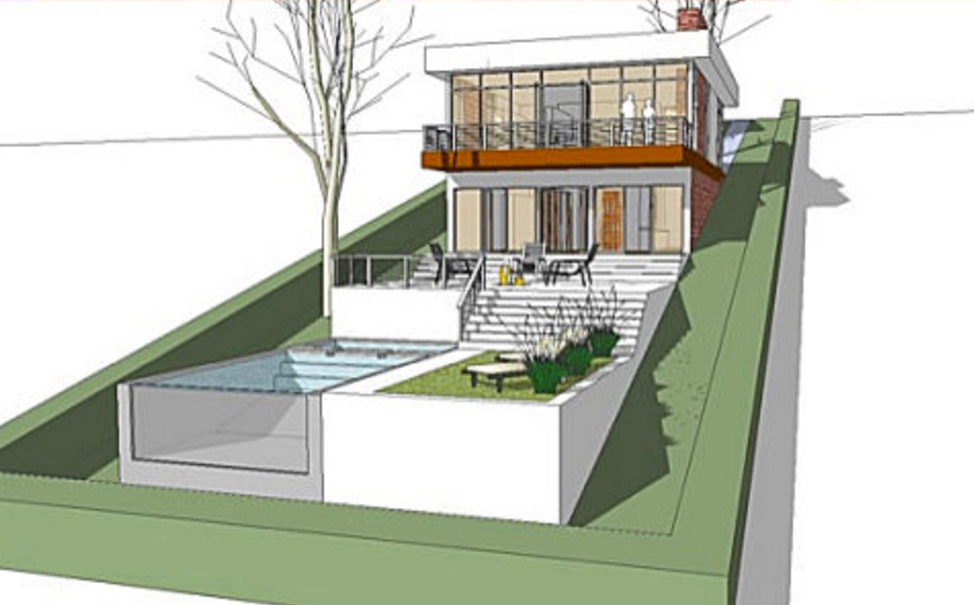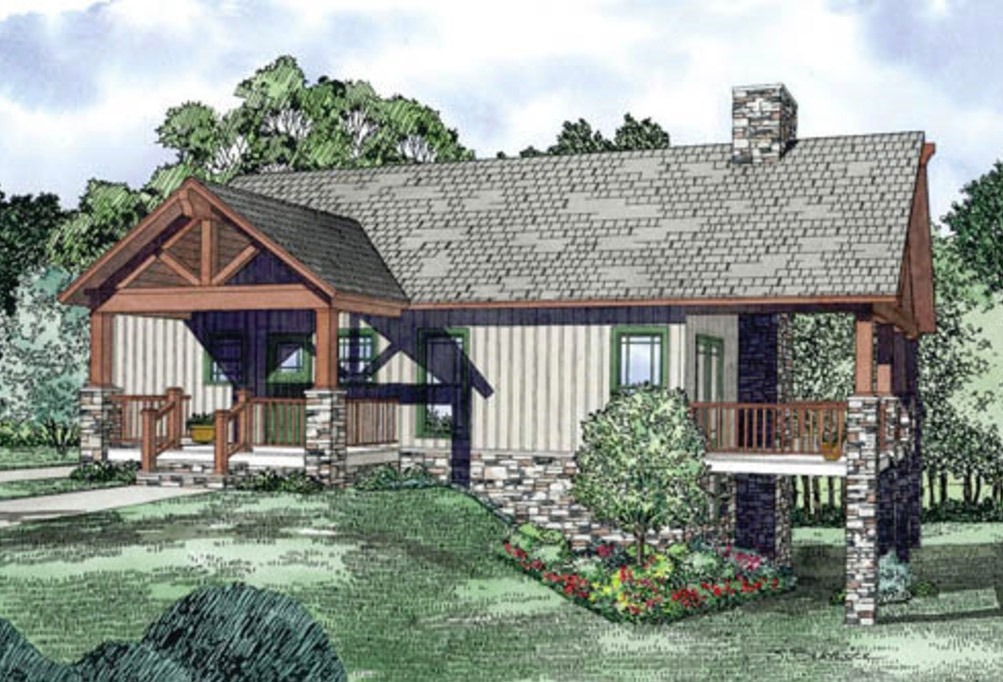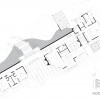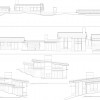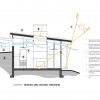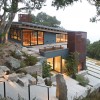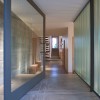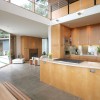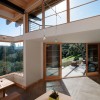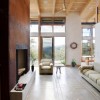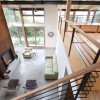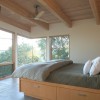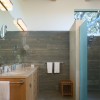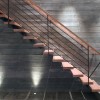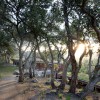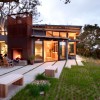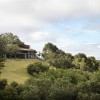House of the Month: House Ocho, Sustainable Living in the Santa Lucia Preserve
Sustainable living in metropolitan areas tends to take the form of large, LEED-certified developments; the majority of plant and wildlife habitat conservation still takes place on public lands. Somewhere in between lies a third option: the blending of human habitation and nature conservancy on the same plot of land. Exploring this option is the Santa Lucia Preserve, located near the coast in central California and occupying acreage that was originally part of the Mexican Land Grants of the 1830s. The owners of House Ocho had been searching unsuccessfully for a home to remodel when they found their lot in the Santa Lucia Preserve.
 Credit: Feldman Architecture
Credit: Feldman Architecture
The Santa Lucia Preserve land was privately owned and maintained until the end of the 20th century, when it was acquired by a group of citizens who embarked upon a plan to create a unique kind of development. After 20 years of planning, they established the Santa Lucia Conservancy, an independent, non-profit trust, to oversee the 20,000-acre preserve. Conservation deeds exist on 90% of this land; a community of 300 families shares 2,000 acres of “Settled Lands” within it.

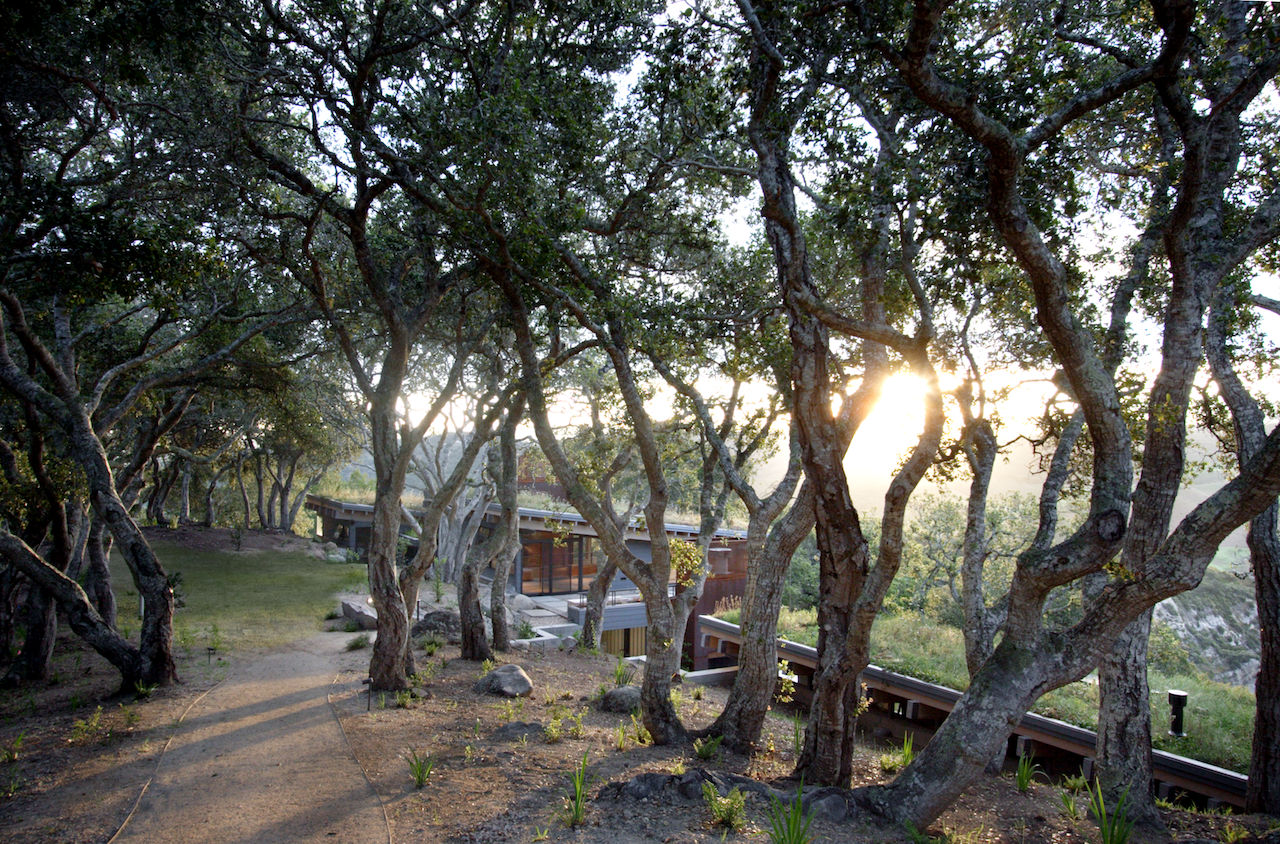

The beauty of the land itself and the philosophy behind the development were instant selling points, and the natural state of the surroundings informed every step of their home design, according to architect Jonathan Feldman, principal of Feldman Architecture. “The guidelines for this development were already stringent, but we took it even further, making sure that the house really fit into the landscape,” Feldman explains.
The first hurdle was selecting a building site. It seemed to run counter to the development’s focus on nature to site the house too prominently, so it was decided to set it into the side of the hill. According to Feldman, this permitted the eastern facade to come out at grade, opening up the rooms and giving an indoor/outdoor feel to the space. “This allowed the house to stay small at 2,800 sq. ft. (260.1 m2), but feel big,” says Feldman.
Because the house is approached from the top of the hill and accessed via wide concrete stairs set into the slope, the main entry is nestled into the sub-grade portion of the house. From the door runs a long hallway that is the spine of the house; a foyer leads from this hallway into the family room, and terminating the hall’s axis are two staircases, one leading to the master suite and another to the loft . “You arrive ’in the hill,’ then move through the house and get pulled out by the view,” explains Feldman. “The complexities of the house are only partially revealed [at the point of entry].”
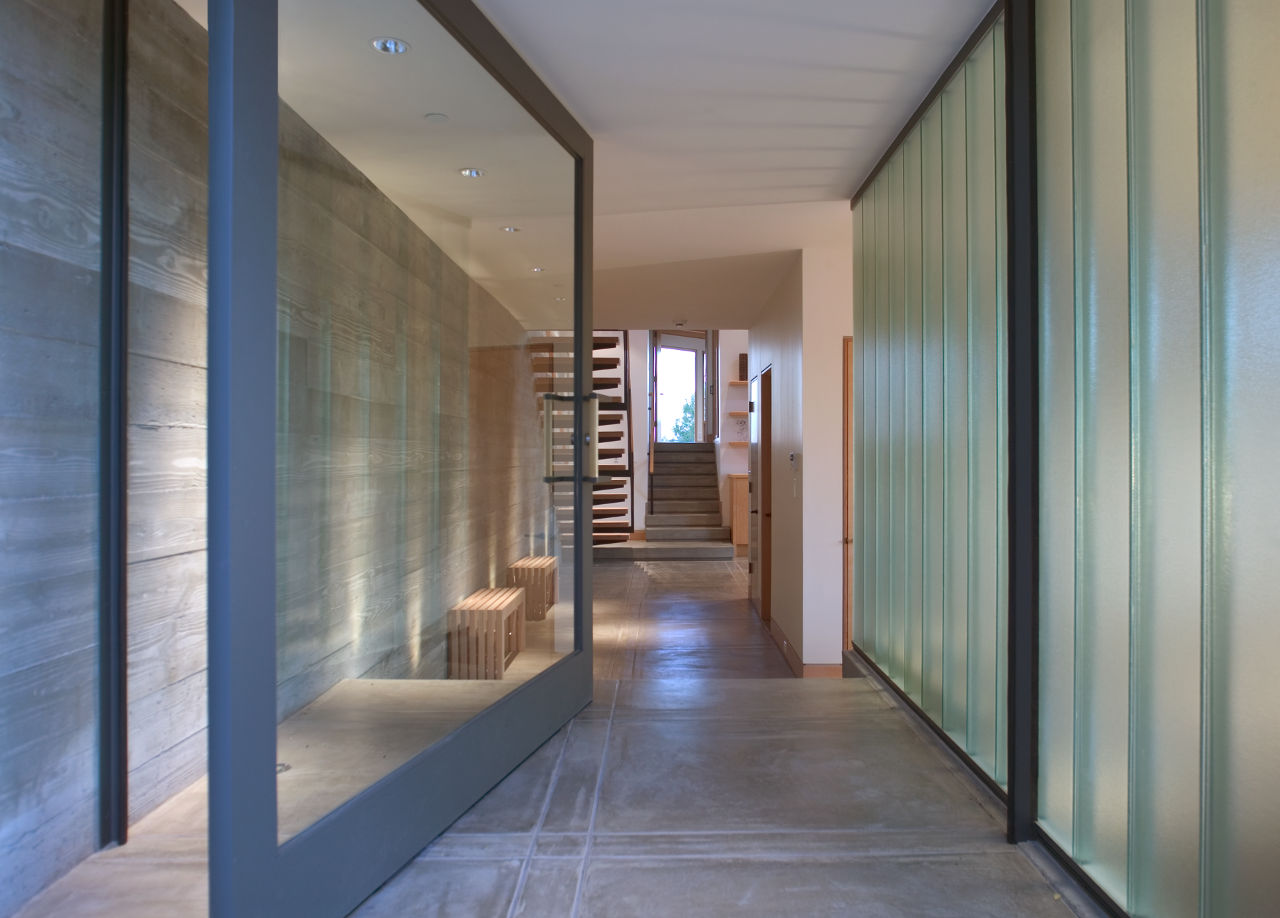
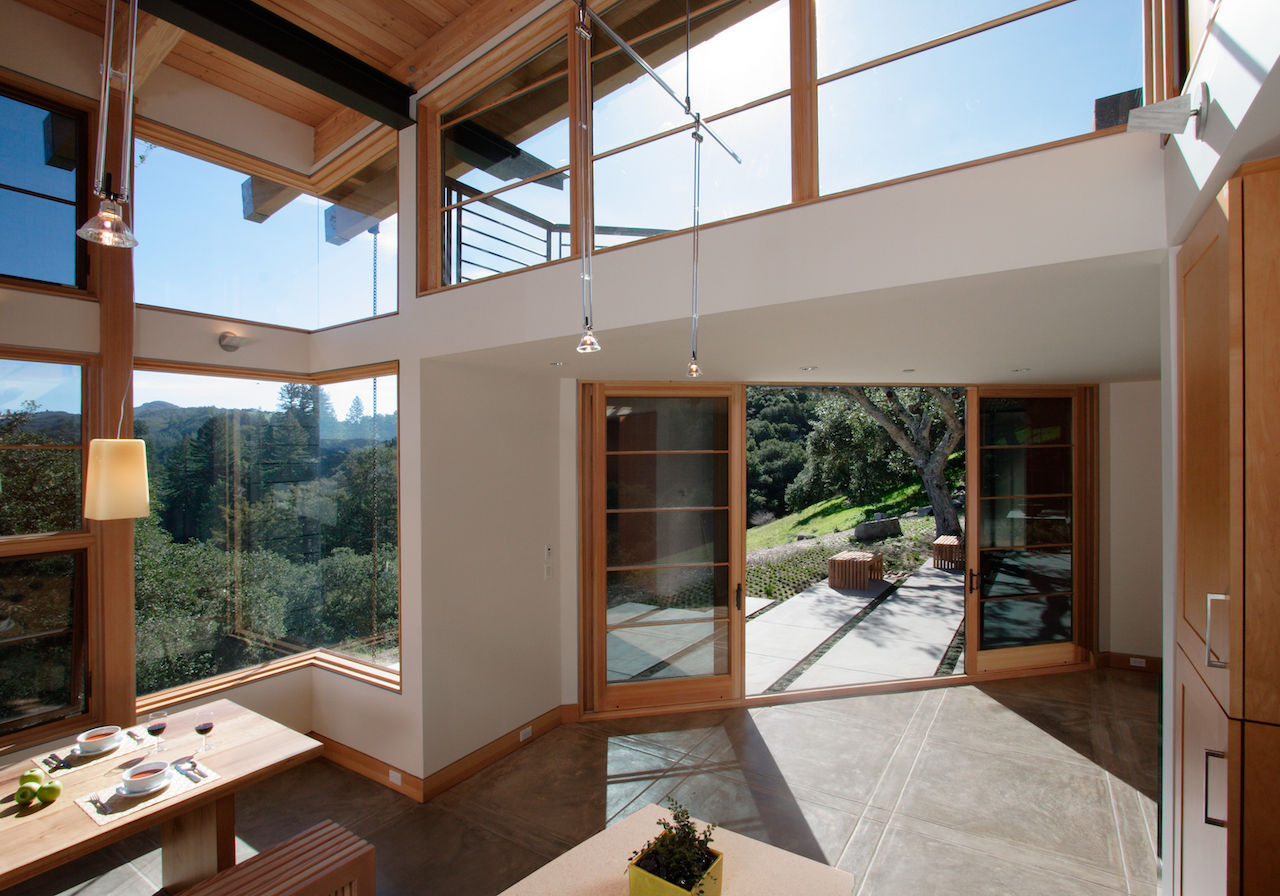
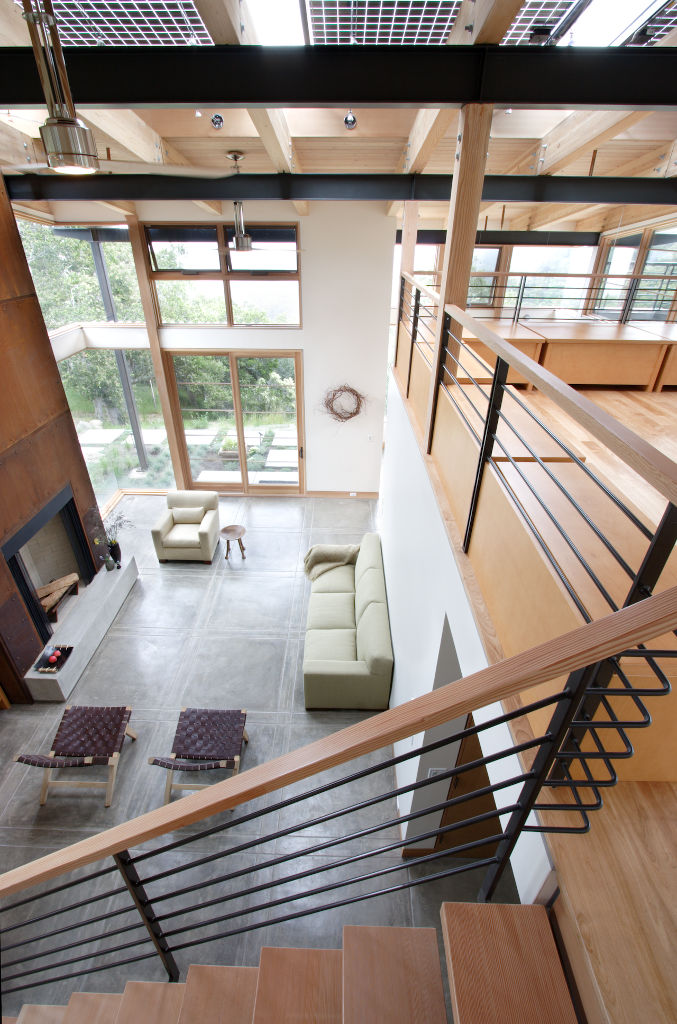
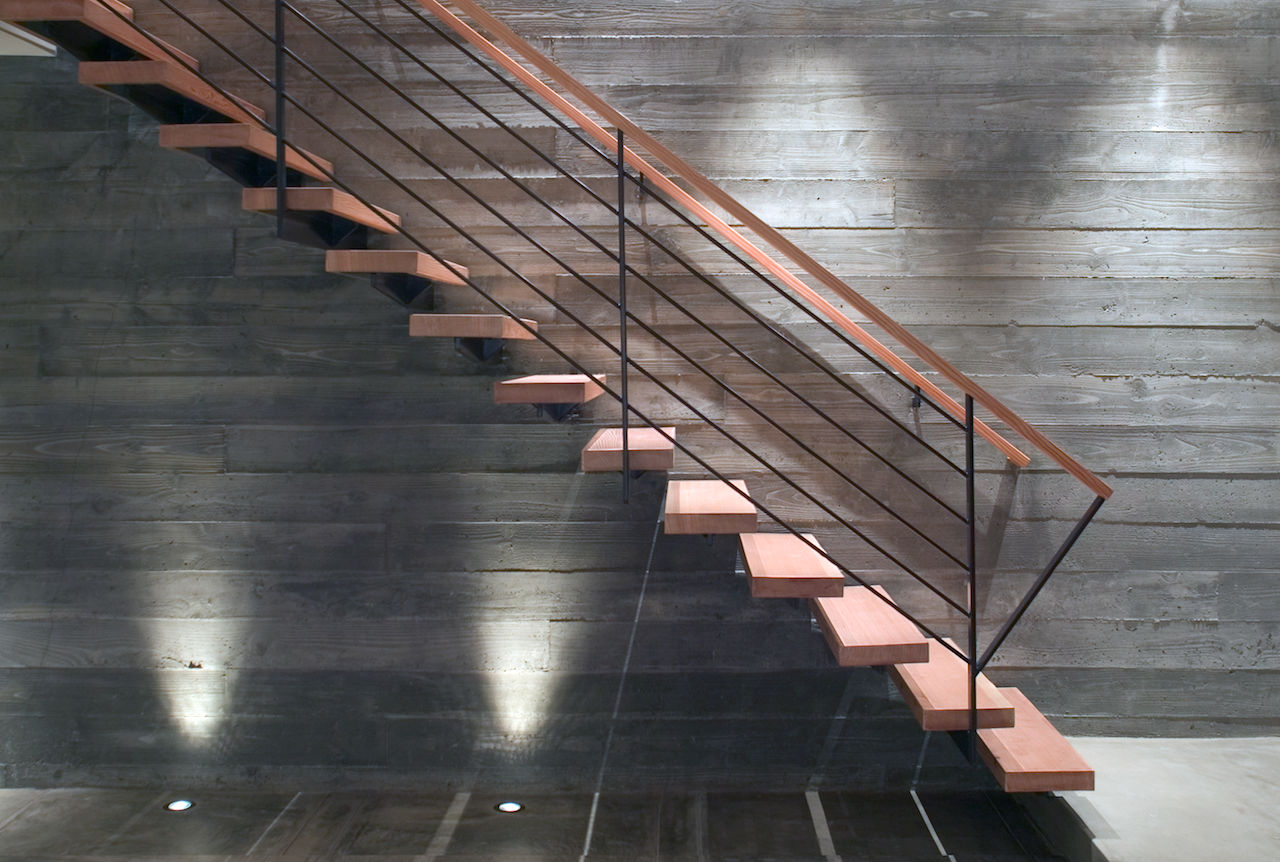
To further reduce its mass, and therefore its visibility, the house was broken into two pieces: a main house of 1, 900 sq. ft. (176.5 m2), and a separate building with guest bedrooms. “We wanted to delicately fit it around the trees,” explains Feldman, “And this decision also helped us functionally, because it let light in along three sides of each structure.” When guests are present, the separation affords extra privacy for everyone. Keeping the main house self-contained also reduces heating and cooling costs, since this is the only portion that is occupied most of the time. Even circulation spaces are largely exterior. Heating and cooling costs are further reduced by materials that contribute to passive solar gain, such as concrete floors. “With the climate we have here, the heat rarely needs to be turned on -- and then only if you want warm floors in the early winter mornings. There’s no air conditioning at all,” says Feldman. The installation of a green roof further integrates the home with its surroundings, while contributing to thermal control. (For more information on the heating and cooling strategies implemented, check out this diagram.)
To bring in even more daylight, a solar panel skylight runs the length of the main house, between its two chimneys. Because the skylight is a prominent feature of the design -- unlike some early solar technologies which were relegated to the role of unsightly add-ons -- it “celebrates green technologies,” says Feldman. “It gives the design a voice.” Dappled sunlight plays across the interior of the house on sunny days, just as it does outside underneath the many oaks.


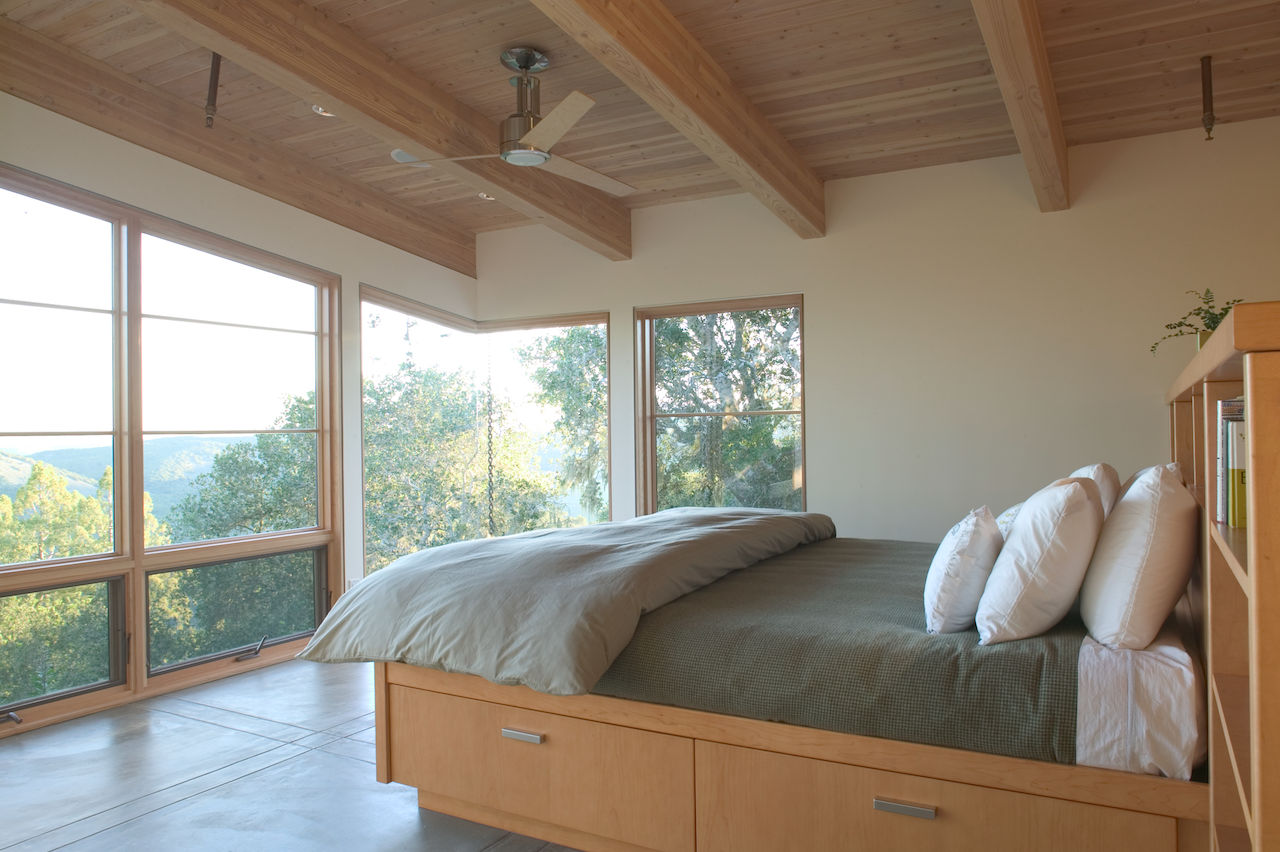
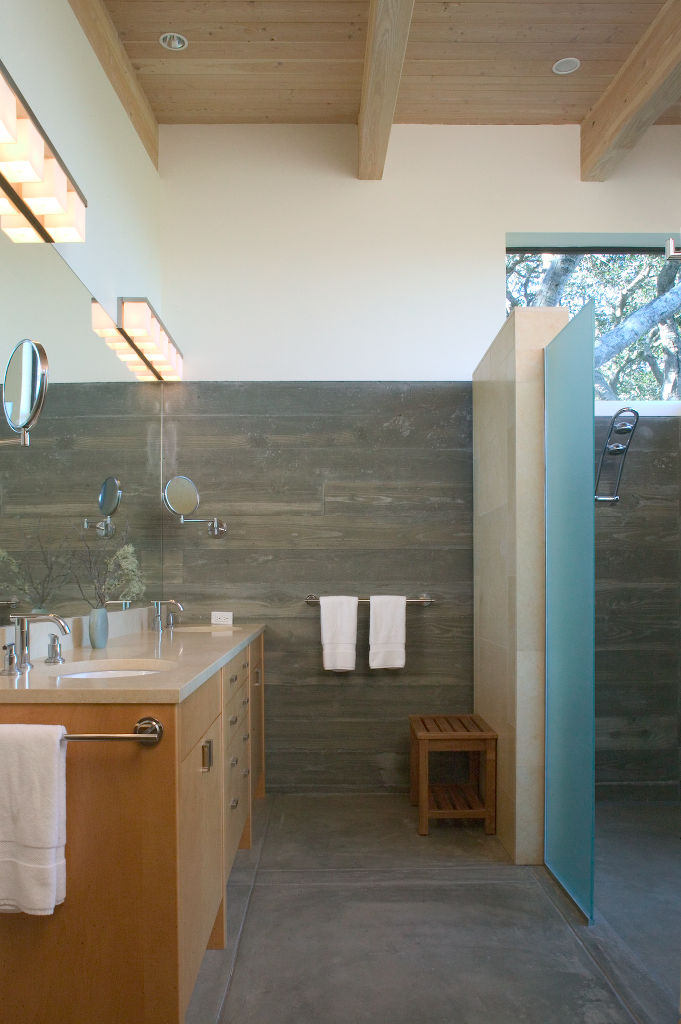
The color palette for the house was inspired by its surroundings. “We had some early photos taken at the site, and what stood out were the oak trees with lichen growing on the sides, and the gray granite boulders. So we used that as our color scheme -- grays that matched the oaks, a red rusted steel that is the same color as the Manzanita trees,” says Feldman. COR-TEN™ steel was ideal for the application, since it weathers and then stabilizes, forming a protective layer against further corrosion. COR-TEN™ encases each of the two fireplaces which anchor the ends of the main house, and their massing is carried beyond the tops of the chimney vents in the form of perforated steel cages.
In addition to creating a house that performs in an eco-friendly fashion, Feldman Architecture made sure that this building visibly expresses its small footprint. The home’s shape, posture and coloration all defer to the landscape around it.
House Ocho by Feldman Architecture - Drawings
View full size PDF's of the drawings below:
- Heating_and_Cooling_Strategies.pdf (2211 Downloads)
- Exterior_Elevations.pdf (2001 Downloads)
- Floor_Plan.pdf (2051 Downloads)
- Exterior_Details.pdf (2545 Downloads)

Kristin Dispenza
Kristin graduated from The Ohio State University in 1988 with a B.S. in architecture and a minor in English literature. Afterward, she moved to Seattle, Washington, and began to work as a freelance design journalist, having regular assignments with Seattle’s Daily Journal of Commerce.
After returning to Ohio in 1995, her freelance activities expanded to include writing for trade publications and websites, as well as other forms of electronic media. In 2011, Kristin became the managing editor for Buildipedia.com.
Kristin has been a features writer for Buildipedia.com since January 2010. Some of her articles include:


